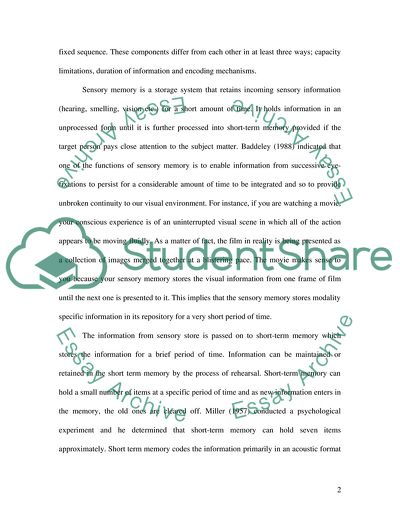Cite this document
(Cognitive Psychology and Memory Assignment Example | Topics and Well Written Essays - 1500 words, n.d.)
Cognitive Psychology and Memory Assignment Example | Topics and Well Written Essays - 1500 words. https://studentshare.org/psychology/1717901-describe-and-evaluate-the-contribution-of-cognitive-psychology-to-the-understanding-of-memory
Cognitive Psychology and Memory Assignment Example | Topics and Well Written Essays - 1500 words. https://studentshare.org/psychology/1717901-describe-and-evaluate-the-contribution-of-cognitive-psychology-to-the-understanding-of-memory
(Cognitive Psychology and Memory Assignment Example | Topics and Well Written Essays - 1500 Words)
Cognitive Psychology and Memory Assignment Example | Topics and Well Written Essays - 1500 Words. https://studentshare.org/psychology/1717901-describe-and-evaluate-the-contribution-of-cognitive-psychology-to-the-understanding-of-memory.
Cognitive Psychology and Memory Assignment Example | Topics and Well Written Essays - 1500 Words. https://studentshare.org/psychology/1717901-describe-and-evaluate-the-contribution-of-cognitive-psychology-to-the-understanding-of-memory.
“Cognitive Psychology and Memory Assignment Example | Topics and Well Written Essays - 1500 Words”. https://studentshare.org/psychology/1717901-describe-and-evaluate-the-contribution-of-cognitive-psychology-to-the-understanding-of-memory.


